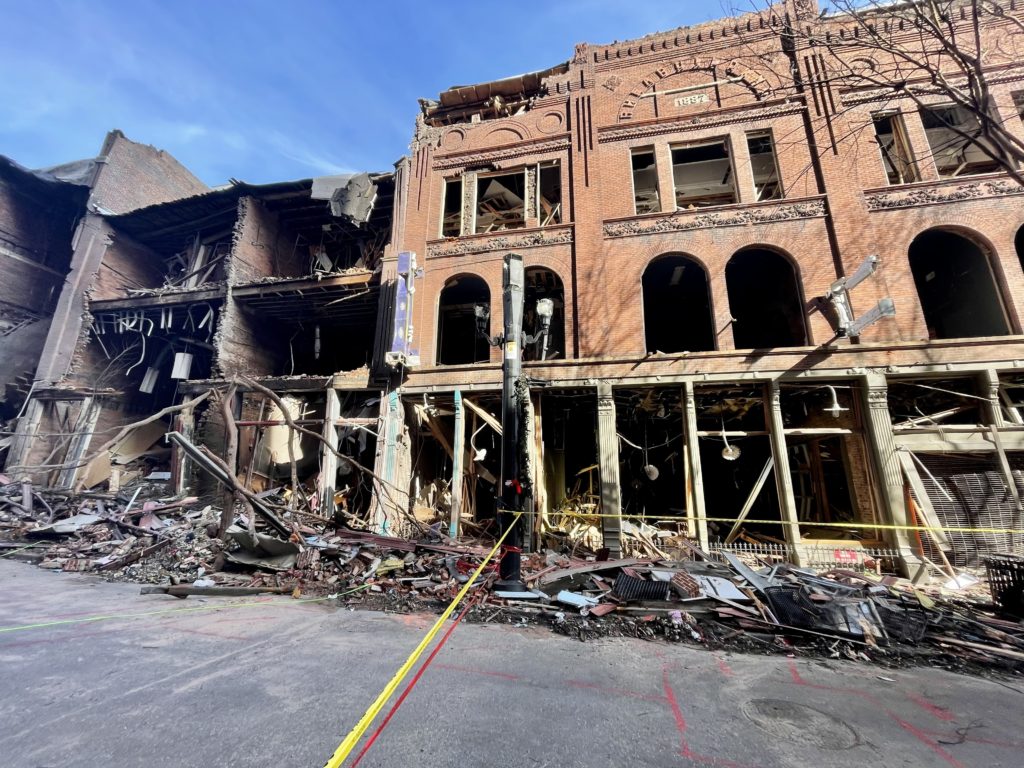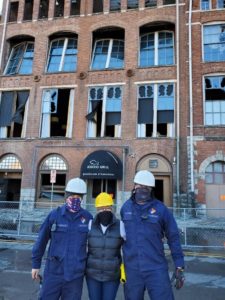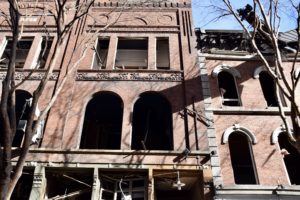
Escaping a bombing was the last thing 64-year-old Betsy Williams thought she’d be doing on Christmas morning. But it’s a day she’ll never forget.
And two weeks later, Williams is now feeling another strain of uncertainty as she waits for the go-ahead to begin rebuilding. Many property owners like her still have more questions than answers, and they’re anticipating a long and expensive process that will test the resilience of Metro officials and the downtown community.
All that has happened in the days since the bombing stands in contrast to her last expectations on Christmas eve. Snow flurries had fallen on the brightly lit avenue, with its brick sidewalks and rows of trees.
Williams had planned to wake up the next morning and sift through holiday stockings, enjoy a meal, open gifts, and experience yet another family tradition that she’s upheld for more than 30 years.
The sound of gunshots interrupted all that, and then an announcement blaring from an RV that was parked across the street from her window on historic Second Avenue in downtown Nashville.
The voice warned residents to evacuate the area. She called 911 twice. Then she heard a shocking countdown.
“We got out with our pajamas on. It was a hectic thing,” says Williams, who’s been living in a hotel since the bomb badly damaged her building.
“It was terrifying and nothing I want to go through ever again.”
Williams co-owns the historic red-brick Rhea Building, where she lives. It also housed several businesses, like Music City Suites and the popular restaurants The Melting Pot and Rodizio Grill, which had their ground-floor windows and walls blown in by the blast.
The city estimates more than 45 businesses were damaged during the explosion. Those a block away had shattered windows. But the hardest-hit are on the verge of collapse, with interiors exposed and shredded, and bricks and beams and glass mounded on the sidewalk.
Last week, Metro Codes deemed seven buildings — whose histories stretch back more than a century — unsafe to enter. Those include the Second Avenue North addresses at 134, 160, 166, 170, 176, 178 and 184.
Beginning the rebuild
Williams, at least, is ready to dive into restoration.
“Unfortunately, when you get to the bottom line, it’s going be a matter of what insurance is going to be willing to cover,” she says. “And [what] building ownership is going to have the means to be able to cover.”
Specifically, she’s wondering whether the bombing will be classified as an act of terrorism. It matters because of insurance.
 Courtesy Betsy Williams
Courtesy Betsy Williams Betsy Williams stands with Nashville firefighters on a stretch of the blast site.
“Our building did have the terrorism clause. So we’re good whichever way,” says Williams. “But I know that most of those insurance policies down there probably do not.”
Other questions are just as big: Whether the history of Second Avenue can truly be preserved, how long recovery could take, and who will be responsible for making it happen. Thus far, two preservation nonprofits have launched a fundraising effort for the restoration, and some federal funding will be available from both a crime victims fund and a disaster relief program.
Williams has no doubt it’ll be costly, but says she’s personally willing to stick it out. But preservationists caution that rebuilding an entire historic block won’t be easy.
Repairing an historic neighborhood
“Things are just extremely well built. That’s the other thing,” says Phil Thomason, as he points to photos of the historic row on his computer. “This is all old-growth lumber in there — in terms of the joist and the flooring.”
Thomason is the namesake of Thomason and Associates, a long-running preservation consulting firm. He’s also one of several national consultants and residents that Nashville Mayor John Cooper is tapping to be a part of the city’s rebuild process.
Special guidelines are expected to shape how that plays out. That’s because the damaged buildings are part of the Second Avenue Historic District, which became nationally registered in the early 1970s to honor buildings that were largely preserved from the late 1800s.
The area was further protected by the Metro Council in the late 1990s.
Thomason says there will be multiple layers to properly restoring the avenue. He also says rebuilding won’t be a free-for-all.
 Damon Mitchell WPLN News
Damon Mitchell WPLN NewsPhil Thomason shows off an archive of Second Avenue building photos at his home office.
“The Metro Historical Commission has purview on design review about what goes in down there,” he says.
About a half-dozen of these buildings are also protected by façade easements. It means that the historic building fronts, facing the avenue, are owned by local preservation nonprofit Historic Nashville Inc.
The group, Thomason says, will have to be consulted on those buildings. The agreements prevent property owners from making changes to preserve their authenticity.
There are also factors like which building materials are allowed, and how FEMA disaster funds factor in — with additional rules. Thomason says the involvement of federal funds will require another level of review by the Tennessee Historical Commission.
He says he’s hopeful that there won’t be an easy opening for a developer to come in, or even a current property owner, to redecorate the neighborhood.
“If a building is truly beyond salvage and a property owner wants to build something new they certainly can,” says Thomason. “But it has to be compatible and in compliance with the design guidelines that we have for Second Avenue.”
There are loopholes, however, which cause concern for Historic Nashville. And last year’s tornado gave the group its latest reason to worry.
‘There’s a legacy of things changing on the zoning side’
The Onyx building on Jefferson Street in Germantown was protected by a Historic Nashville property easement — until it wasn’t.
“That building was damaged and deemed unsalvageable, in which case the easement falls off it,” says Elizabeth Elkins, the president of Historic Nashville. “The property’s gone.”
Historic designations, Elkins says, only go so far. She also says it’s not unheard of for the rules to be overturned by local officials.
 Rachel Iacovone WPLN News
Rachel Iacovone WPLN NewsThe Rhea Building on Second Avenue was one of seven properties deemed unsafe to enter by the Metro Codes department.
“You look at the history of the city changing zoning, for example, with specific permits that are so popular on Music Row,” says Elkins. “There’s a legacy of things changing on the zoning side when they need to.”
Still, there is a general feeling that many of Second Avenue’s shareholders — like Betsy Williams — are committed to restoring the neighborhood.
“This is not a thing going, ‘I’m opposed to development and high rises.’ … I certainly appreciate the investments that businesses make,” says Williams. “But it is important that we have a balance of those things.”
So far, she says the process of assessing her building has gotten off to a slow start. That’s due to safety concerns and federal investigators initially holding control of the site for most of six days.
When the rebuild does begin, however, Williams says she’s optimistic the area will gather what it needs to be successful. She also says she would like to see attention move away from the bomber, and toward unity and recovery.
“The outpouring of love, and support, and confidence that things are going to be good going forward, has so far outweighed the destruction that he had in his mind,” says Williams. “That will live much longer in mind … than what he did.”

